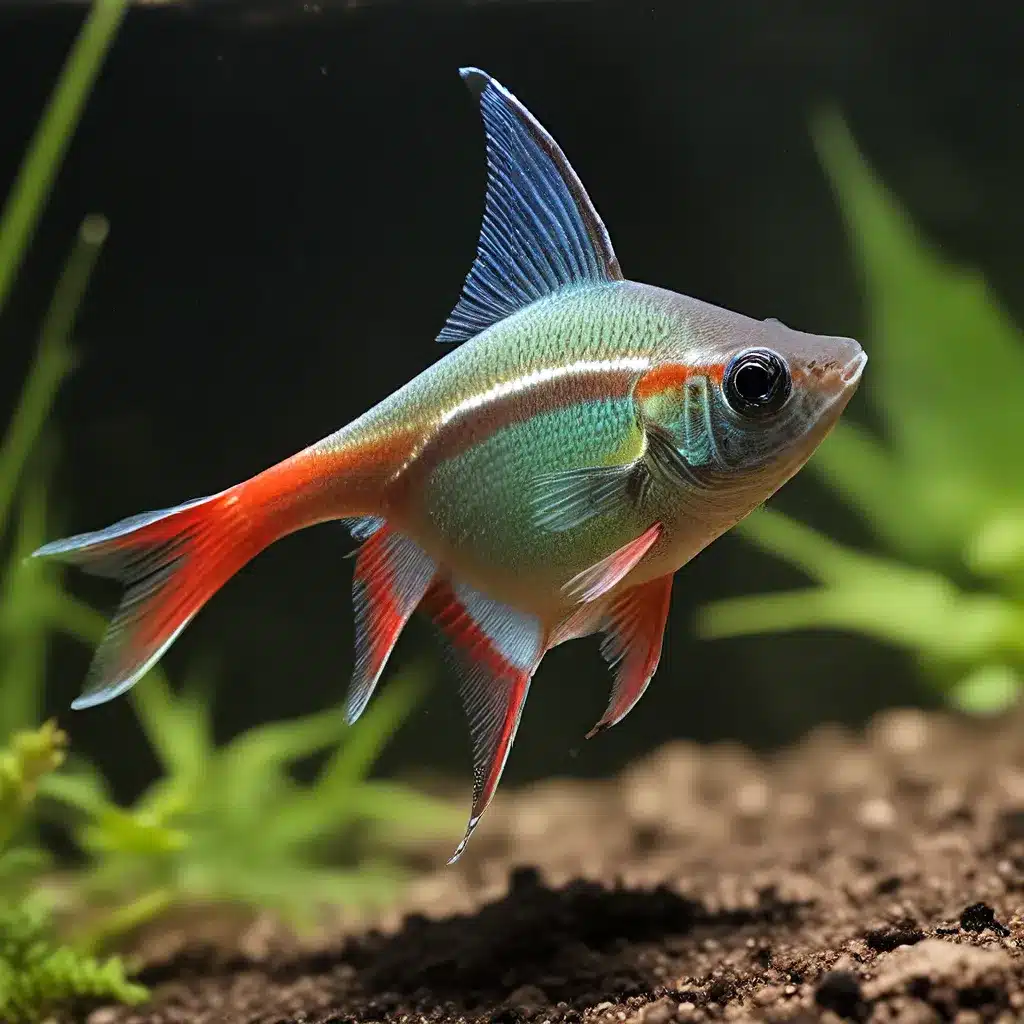
The Captivating Neon Tetra
Neon tetras are a beloved addition to many home aquariums, prized for their vibrant colors and lively personalities. Originating from the diverse Amazon Basin, these small freshwater fish have captured the hearts of aquarists worldwide.
In their natural habitat, neon tetras thrive in both blackwater and clearwater streams, surrounded by dense vegetation and low-light areas. Maintaining the right environmental conditions is crucial for ensuring these delicate fish can display their full splendor and live long, healthy lives in the aquarium. From understanding their unique water parameter needs to curating the perfect community of tank mates, this comprehensive guide will equip you with the knowledge to create a thriving home for your neon tetras.
Mirroring the Natural Habitat
To recreate the ideal environment for neon tetras, it’s essential to mimic the characteristics of their native Amazon Basin. These fish flourish in soft, acidic water with a pH between 4.0 and 7.5, and a hardness no greater than 10 dGH. Maintaining stable water parameters is crucial, as neon tetras are sensitive to sudden changes.
Incorporating natural decor elements like driftwood, leaves, and dense live plants helps to create the low-light, densely vegetated conditions they thrive in. The use of a dark substrate, such as black sand or gravel, further enhances the natural appearance and provides a suitable backdrop for the tetras’ vibrant colors.
Filtration is also a key consideration. A gentle, sponge-based filter is recommended to maintain water quality while avoiding strong currents that could stress the fish. Regular partial water changes, typically 25-30% every week, help to replenish essential minerals and remove waste buildup.
Feeding and Nutrition
In the wild, neon tetras enjoy a diverse diet of algae, insect larvae, and small crustaceans. Recreating this varied menu in the aquarium is essential for their health and vitality. Offer a combination of high-quality flakes, micro-pellets, frozen foods like brine shrimp and bloodworms, as well as occasional vegetable matter like blanched spinach or zucchini.
It’s important to avoid overfeeding, which can lead to water quality issues and health problems. Stick to a feeding schedule of two small meals per day, allowing the fish to consume all the food within a few minutes. Monitoring portion sizes and removing any uneaten food helps to maintain a clean, thriving environment.
Ideal Tank Mates
Neon tetras are known for their peaceful and social nature, making them excellent community fish. When selecting tank mates, it’s crucial to choose species that are similarly sized, non-aggressive, and can thrive in the same water parameters.
Ideal companions include other schooling fish like Congo tetras, harlequin rasboras, and dwarf corydoras. These fish will not only coexist harmoniously with the neon tetras but also contribute to the overall aesthetic and behavioral dynamics of the aquarium.
Avoid larger, more aggressive fish that may view the neon tetras as potential prey. Bottom-dwelling species like bristlenose plecos and shrimp make excellent additions, as they occupy a different area of the tank and do not compete for resources.
Breeding and Reproduction
Breeding neon tetras can be a rewarding challenge for experienced aquarists. To encourage spawning, the water parameters must be carefully adjusted to mimic the conditions of their natural habitat. This includes a slightly lower pH (5.8-6.8), softer water (3-5 dGH), and a water temperature around 80°F (26°C).
Providing a dedicated breeding tank with dense vegetation, subdued lighting, and a sponge filter is crucial for creating the right environment. Once the eggs are laid, it’s essential to remove the adult tetras to prevent them from consuming their own offspring. With patience and attention to detail, you can successfully breed these captivating fish.
Common Health Concerns
Like any aquarium inhabitants, neon tetras are susceptible to various health issues, particularly when their environment is not properly maintained. Staying vigilant and addressing potential problems early on is key to ensuring the long-term wellbeing of your tetras.
One of the most serious threats is the Neon Tetra Disease, a parasitic infection that can have devastating effects. Symptoms include a gradual loss of color, the development of cysts, and swimming difficulties. Regrettably, there is no known cure for this condition, making prevention through proper tank management the best approach.
Other common ailments include columnaris (also known as “false neon tetra disease”) and the ubiquitous ich (white spot disease). These can often be effectively treated with appropriate medications, but maintaining optimal water quality is crucial in preventing their occurrence.
Creating a Thriving Environment
By understanding the unique care requirements of neon tetras and applying the principles outlined in this guide, you can create a thriving and visually stunning aquarium showcase. From replicating their natural habitat to providing a balanced diet and compatible tank mates, your attention to detail will be rewarded with a school of vibrant, healthy tetras that will captivate all who observe them.
Remember, maintaining stable water conditions, consistent water changes, and a well-functioning filtration system are the cornerstones of successful neon tetra care. With a little dedication and the right approach, you can ensure that these delightful fish thrive in your aquarium for years to come.
So, dive into the captivating world of neon tetras and experience the joy of nurturing these remarkable aquatic creatures in your own home.

